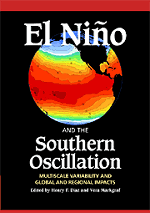19 results
Steppe Expansion in Patagonia?
-
- Journal:
- Quaternary Research / Volume 30 / Issue 3 / November 1988
- Published online by Cambridge University Press:
- 20 January 2017, pp. 331-338
-
- Article
- Export citation
Reply to C. J. Heusser's “Southern Westerlies during the Last Glacial Maximum”
-
- Journal:
- Quaternary Research / Volume 31 / Issue 3 / May 1989
- Published online by Cambridge University Press:
- 20 January 2017, pp. 426-432
-
- Article
- Export citation
Phylogeny, diet, and habitat of an extinct ground sloth from Cuchillo Curá, Neuquén Province, southwest Argentina
-
- Journal:
- Quaternary Research / Volume 59 / Issue 3 / May 2003
- Published online by Cambridge University Press:
- 20 January 2017, pp. 364-378
-
- Article
- Export citation
Paleoenvironmental Changes at the Northern Limit of the Subantarctic Nothofagus Forest, lat 37°S, Argentina
-
- Journal:
- Quaternary Research / Volume 28 / Issue 1 / July 1987
- Published online by Cambridge University Press:
- 20 January 2017, pp. 119-129
-
- Article
- Export citation
Pollen of the High Andean Flora, Province of Mendoza, Argentina. By Monica Wingenroth and C. J. Heusser. Instituto Argentino de Nivologia y Glaciologia (IANIGLA), Mendoza, 1985, 195pp., $45.00
-
- Journal:
- Quaternary Research / Volume 29 / Issue 2 / March 1988
- Published online by Cambridge University Press:
- 20 January 2017, pp. 190-191
-
- Article
- Export citation
Multiproxy Record of Late Pleistocene–Holocene Climate and Vegetation Changes from a Peat Bog in Patagonia
-
- Journal:
- Quaternary Research / Volume 55 / Issue 2 / March 2001
- Published online by Cambridge University Press:
- 20 January 2017, pp. 168-178
-
- Article
- Export citation
San Agustin Plains, New Mexico: Age and Paleoenvironmental Potential Reassessed
-
- Journal:
- Quaternary Research / Volume 22 / Issue 3 / November 1984
- Published online by Cambridge University Press:
- 20 January 2017, pp. 336-343
-
- Article
- Export citation
Postglacial vegetation, climate, and fire history along the east side of the Andes (lat 41–42.5°S), Argentina
-
- Journal:
- Quaternary Research / Volume 66 / Issue 2 / September 2006
- Published online by Cambridge University Press:
- 20 January 2017, pp. 187-201
-
- Article
- Export citation
Frontmatter
-
- Book:
- El Niño and the Southern Oscillation
- Published online:
- 04 August 2010
- Print publication:
- 09 November 2000, pp i-iv
-
- Chapter
- Export citation
13 - The Past ENSO Record: A Synthesis
- from SECTION B - Long-Term Changes in ENSO: Historical, Paleoclimatic, and Theoretical Aspects
-
-
- Book:
- El Niño and the Southern Oscillation
- Published online:
- 04 August 2010
- Print publication:
- 09 November 2000, pp 463-486
-
- Chapter
- Export citation
Index
-
- Book:
- El Niño and the Southern Oscillation
- Published online:
- 04 August 2010
- Print publication:
- 09 November 2000, pp 487-494
-
- Chapter
- Export citation

El Niño and the Southern Oscillation
- Multiscale Variability and Global and Regional Impacts
-
- Published online:
- 04 August 2010
- Print publication:
- 09 November 2000
Acknowledgments
-
- Book:
- El Niño and the Southern Oscillation
- Published online:
- 04 August 2010
- Print publication:
- 09 November 2000, pp xi-xii
-
- Chapter
- Export citation
SECTION B - Long-Term Changes in ENSO: Historical, Paleoclimatic, and Theoretical Aspects
-
- Book:
- El Niño and the Southern Oscillation
- Published online:
- 04 August 2010
- Print publication:
- 09 November 2000, pp 205-206
-
- Chapter
- Export citation
SECTION A - Global and Regional Characteristics and Impacts of ENSO Variability
-
- Book:
- El Niño and the Southern Oscillation
- Published online:
- 04 August 2010
- Print publication:
- 09 November 2000, pp 1-2
-
- Chapter
- Export citation
Contents
-
- Book:
- El Niño and the Southern Oscillation
- Published online:
- 04 August 2010
- Print publication:
- 09 November 2000, pp v-vi
-
- Chapter
- Export citation
Preface
-
- Book:
- El Niño and the Southern Oscillation
- Published online:
- 04 August 2010
- Print publication:
- 09 November 2000, pp xiii-xvi
-
- Chapter
- Export citation
Contributors
-
- Book:
- El Niño and the Southern Oscillation
- Published online:
- 04 August 2010
- Print publication:
- 09 November 2000, pp vii-x
-
- Chapter
- Export citation
Prähistorisches Holz. The Value of Wood Remains from Central Europe for the Solution of Archaeological and Paleoenvironmental Problems. F. H. Schweingruber. Academica Helvetica, vol. 2, 1976, 132 pp., illus. 42.-Swiss Francs (ca $12 U.S.). (In German with French and English summaries.)
-
- Journal:
- American Antiquity / Volume 43 / Issue 1 / January 1978
- Published online by Cambridge University Press:
- 20 January 2017, pp. 131-132
- Print publication:
- January 1978
-
- Article
- Export citation



